
A Breath of Clean Air: 3 Strategies for Enhancing School Indoor Air Quality
The success and productivity of students and teachers depends significantly on excellent indoor air quality (IAQ) in schools. A 2014 study by Harvard found that cognitive function test scores doubled in environments with good school indoor air quality.
Unfortunately, the U.S. Environmental Protection Agency reports that of the adults and children that work or study in schools, half of them breathe polluted, unhealthy air. In addition, the U.S. Environmental Protection Agency (EPA) and its Science Advisory Board also rank indoor air pollution in the top five of public health environmental risks.
Furthermore, children breathe a greater volume of air (relative to their weight) than adults, and they don't process toxins as well as adults, which makes children more vulnerable to the consequences of exposure to pollutants.
Indoor Air Quality Standards for Schools

The ANSI/ASHRAE 62.1-2022 Standard Ventilation defines acceptable IAQ as air without harmful concentrations of contaminants, as determined by qualified authorities, where most of those exposed (80 percent) do not express dissatisfaction. While not mandatory, ASHRAE Standards typically provide minimum design requirements.
Administrators can improve their school's indoor air quality by implementing the following into its design:
Adequate ventilation
Air filtration in the HVAC system
Air sanitizing with Lumalier's advanced UVC Germicidal Disinfection products
What Causes Poor IAQ in Schools?
Problems with indoor air quality happen for several reasons:
The use of harsh cleaning products can cause an increase in long- and short-term health issues like asthma, lung irritation, eye irritation, and coughing.
Poor building maintenance can lead to dampness, mold, and uncontrolled classroom temperatures.
Inadequate ventilation due to outdated designs, aging or badly maintained systems, and safety considerations. According to a literature review published in refereed archival journals, school ventilation rates fall below the ASHRAE standards deemed necessary for a healthy indoor environment, possibly due to improper installation, operation, and maintenance of HVAC systems.
There is a lack of sufficient environmental testing for toxic chemicals at the school building site.
Some schools have been built too close to sources of air pollution and contaminated facilities
Old schools that were constructed with toxic materials.
Poor Air Quality in Schools Impacts Students, Teachers, and Their Families
Inadequate ventilation, poor building maintenance, and toxic disinfectant chemicals can all cause unhealthy indoor air quality, which can lead to significant problems for students, teachers, and their families:
Lower student scores on standardized math and reading tests
More absenteeism rates among students and teachers
Decreased graduations rates, which limits students’ long-term earning potential
Increases in school employee dissatisfaction and staff turnover.
The severity and frequency of respiratory illnesses, like asthma and allergies
Increase in the transmission of viruses and bacteria resulting in more flu, colds, and serious infectious diseases, like tuberculosis
Higher risk of long-term, even life-threatening illnesses, like cancer and cardiovascular disease, particularly among school employees
More costly medical bills and doctor visits for families
How to Improve Air Quality in Schools
Educators and administrators can implement several methods to improve the air quality in their schools: ventilation, air filtering, and disinfecting air with UVC.
Ventilation
Sufficient ventilation through the school's fenestrations and fans can help bring fresh, outdoor air inside, which helps keep pathogens from accumulating inside and infecting the students and teachers, to help increase student health and academic performance and decrease absences.
Furthermore, the EPA reports that indoor air contains common contaminants at levels two to five times higher than outdoor air, so increasing the outdoor airflow through the school with open windows, doors, and skylights can help reduce the potential concentration of viruses particles in the air.
In addition, installing an energy recovery ventilation system will help manage ventilation and lower energy loss by transferring energy from outgoing conditioned air to fresh incoming air.
Filtering Air Through the HVAC System
Filtering air through the HVAC system can reduce airborne contaminants, including viruses, in a building or small space. Installing a high-efficiency particulate air (HEPA) filter in the school HVAC system can theoretically remove at least 99.97 percent of bacteria, mold, pollen, and 0.3-micron size airborne particles from the air.
Disinfect the Air with Ultraviolet Light
Ultraviolet (UVC) 254 nm radiation fixtures provide a safe, disinfecting option for improving the air quality in schools by destroying the genetic material (DNA and RNA) in viruses, bacteria, and mold in the air. UVC can effectively and safely inactivate the SARS-CoV-2 virus up to 99.9 percent.
Administrators can choose from several types of UVC units to disinfect airborne pathogens and improve the air quality of their schools:
Installing Air Handler Units (AHU) and duct fixtures, like the Lumalier AR Series UVC, inside a ventilation system helps disinfect airborne pathogens and improves IAQ.
Upper-Air UVC Fixtures target high-risk areas of a school, like classrooms, administrative buildings, hallways, cafeterias, nurses' stations, libraries, etc.
Lumalier’s Air Handler Unit (AHU) and Duct Fixture
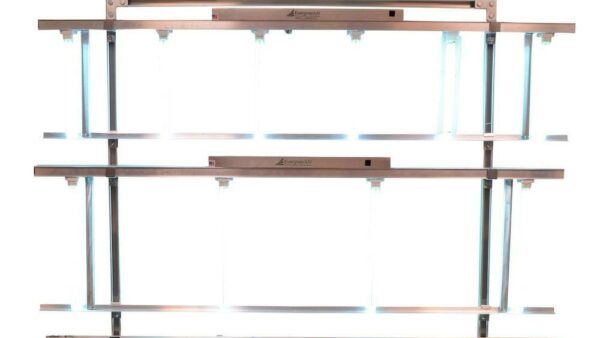
Lumalier commercial AR (adjustable rack) Series UVC fixtures work at a wavelength of 253.7 nanometers to improve indoor air quality without exposure to the occupants. Lumalier AR Series UVC fixtures work 24/7 to create a safe, comfortable indoor environment that neutralizes and eliminates airborne infectious pathogens that cause respiratory disease and illness.
Advantages of Lumalier AR Series UVC Fixtures
Installing Lumalier AR Series UVC Fixtures into the HVAC of a school offers several financial and environmental advantages:
Maximizes square-foot disinfecting coverage at the lowest cost
Utilizes existing ventilation systems to disinfect and distribute air
Eliminates microbial growth on coils and drain pans that can cause coil fouling, odors, and early failure of air conditioning equipment
Lessens energy consumption and maintenance - an ROI benefit for school systems
Lumalier UVC Upper-Air Products
The engineering of upper-air UVC fixtures effectively cleans the coils and improves a classroom’s indoor air quality (IAQ) and energy efficiency.
Schools can install upper-air UVC fixtures in classrooms, administrative buildings, hallways, cafeterias, and libraries - any spaces with high or low ceilings, regardless of square footage.
Upper-air UVC fixtures allow for permanent or temporary installation.
Units kill infectious airborne pathogens that cause respiratory disease.
Units disinfect air continuously, 24/7, in occupied spaces.
Natural convection currents ensure continuous air disinfection within defined spaces. Also available in fan-assisted models for added ventilation.
Lumalier offers three upper-air options: ceiling-mounted, wall-mounted, and hybrid units:
Ceiling-Mounted Upper-Air UV Fixtures
Lumalier ceiling-mounted, high-ceiling units for 360° upper-air coverage include the GC, CDU, and PM Series.
Lumalier GC Series
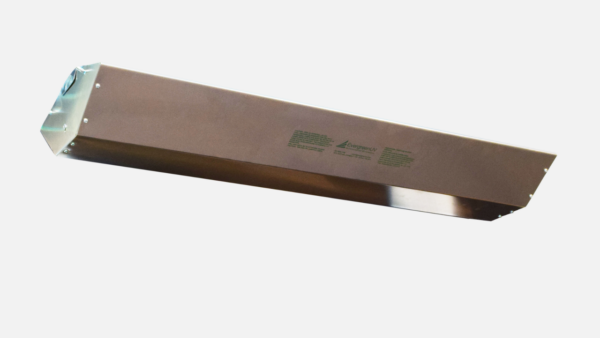
The ceiling-mounted Lumalier GC Series, for high ceilings, inactivates pathogens in high-risk, upper-air spaces, effectively above the heads of students and teachers. The GC Series comes in several models to accommodate various coverage areas.
Lumalier 2x2 Series
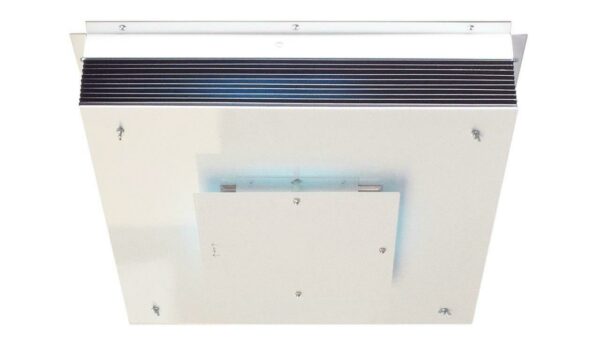
The Lumalier advanced engineering 2x2 upper-air UVC units combine dynamic and passive UVC disinfection for high-risk areas like classrooms, offices, faculty lodges, etc. The 2x2 Series covers a disinfection space, 1200 ft2, and 8-plus ceiling height.
The 2x2 fixture design allows installation into a suspended ceiling grid T-bar system, flush mounted to the ceiling (hardwired), or cable-suspended to blend into the ceiling.
Lumalier PM Series
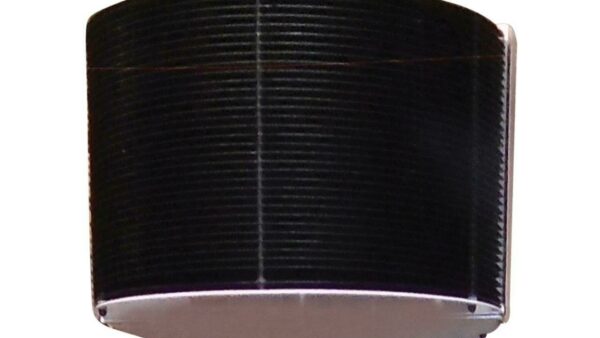
The pendant-mounted, louvered, upper-air design of the Lumalier PM Series permits low ceiling mounting (eight to ten feet), to effectively neutralize infectious pathogens in spaces up to 400 ft2.
Wall-Mounted Upper-Air UV Fixtures
Lumalier’s four wall-mounted units provide 180° upper-air coverage within a space: the GL, HW, WM, and CM Series:
Lumalier GL Series
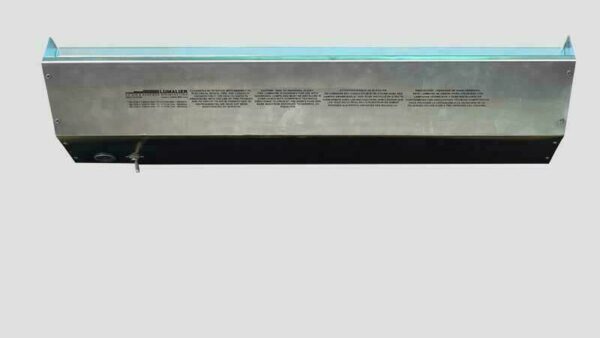
The Lumalier GL Series open-style upper-air systems mount on walls in rooms with ceilings greater than 12 feet, either permanently or temporarily.
Lumalier HW Series
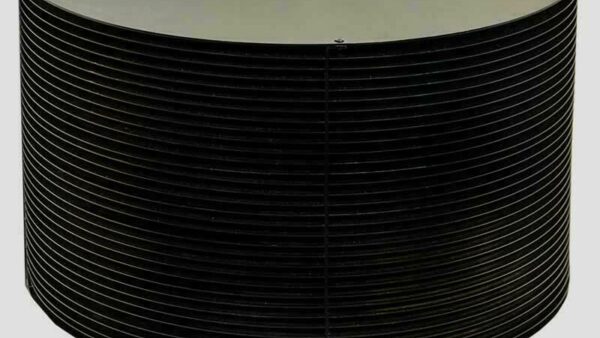
The Lumalier HW Series targets pathogens in low-ceiling spaces, like corridors, hallways, or other long-narrow spaces leading to a school.
Lumalier WM Series
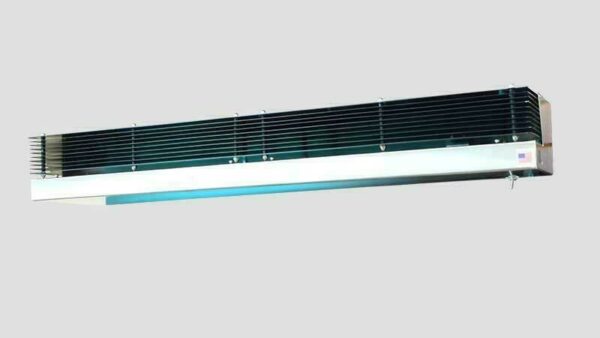
The Lumalier WM Series fixtures attach to the walls of rooms with low ceilings (eight to ten feet).
Lumalier CM Series
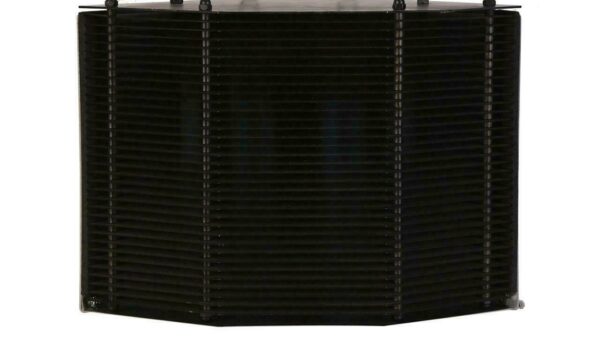
The Lumalier CM Series units corner-mount to small rooms with low-ceiling (eight to ten feet).
Lumalier Hybrid Units
Lumalier Hybrid units combine the best features of the upper-air and surface disinfection products with the: ASD, FA, and MED Series:
Lumalier ASD Series
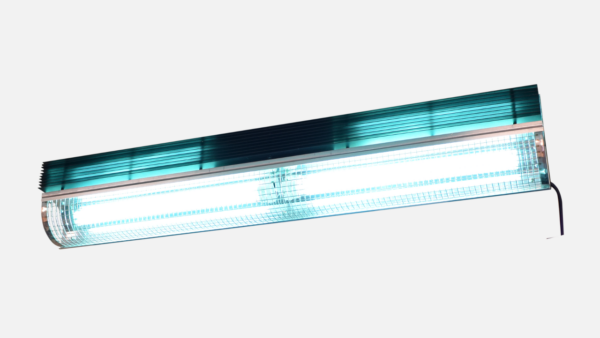
Dual-purpose Lumalier ASD Series UVC fixtures kill airborne infectious pathogens in the air and on surfaces.
Provides passive airborne pathogen reduction in high-risk occupied spaces
Achieves high-log surface (fomite) decontamination in unoccupied surface spaces
Lumalier FA Series
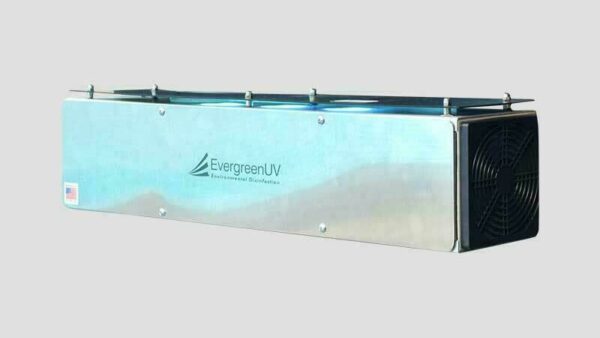
The Lumalier FA (Forced Air) UVC Disinfection Series provides continuous (24/7), eye-level air movement that kills airborne infectious pathogens in spaces unable to use traditional upper-air or in-duct options. In addition, Lumalier completely encloses the FA fixture for the room occupants’ safety.
The FA series comes in five non-height restricted models with disinfection coverage ranging from 300 to 1000 ft2.
Lumalier UVC Lights for Improved IAQ in Schools
Lumalier UVC Lights are a safe and effective way to improve the air quality of schools and protect students and teachers against infectious viruses, bacteria, etc. Creating a healthy classroom will also enhance students' and teachers' productivity, reduce absenteeism, improve test scores and graduation rates, and save families money on medical bills.
To learn more about improving indoor air quality in schools using UVC lights, please contact us today or call (901) 800-1709 to talk to our engineering, sales, and customer service teams!
